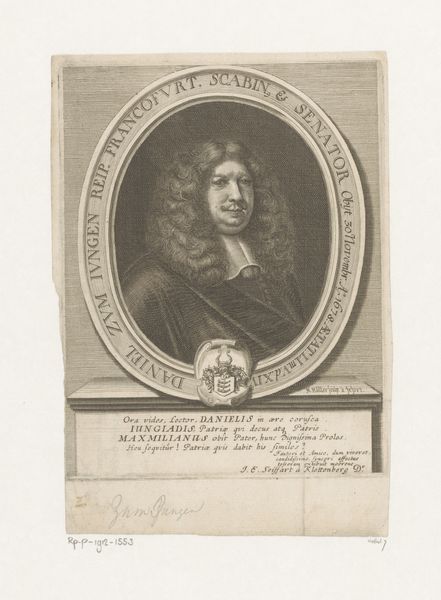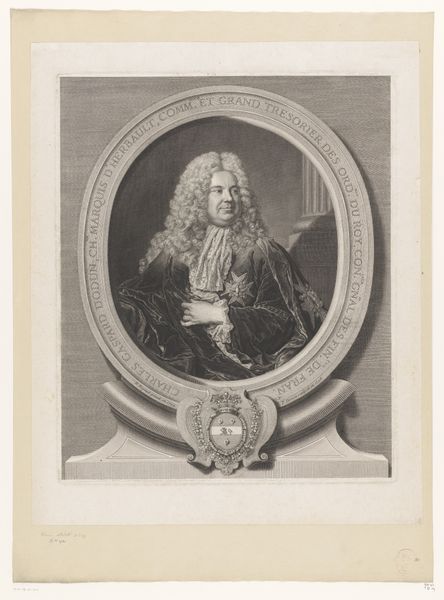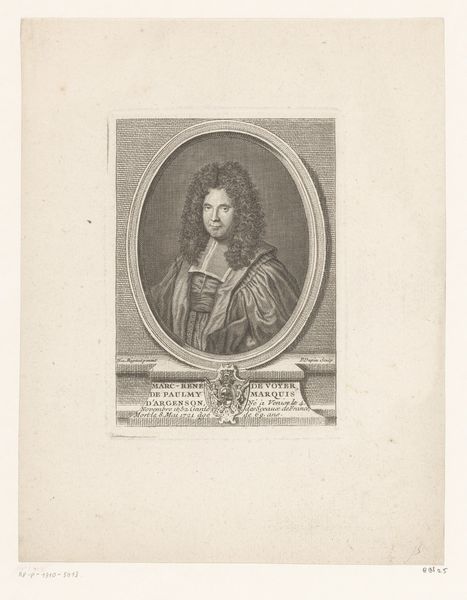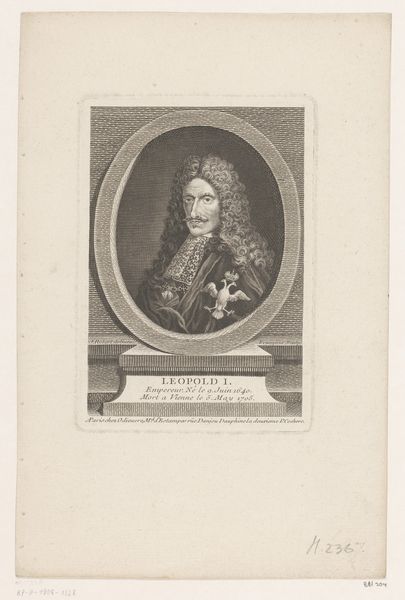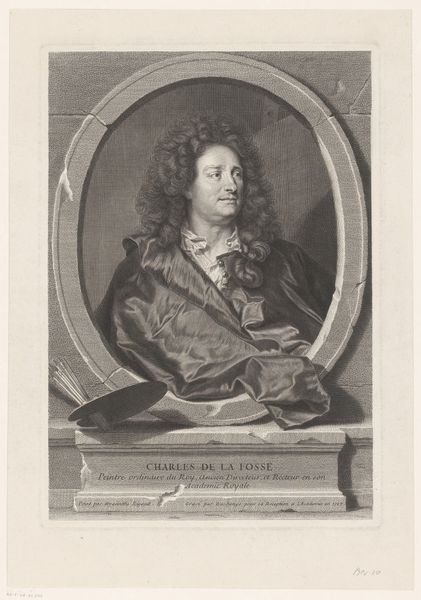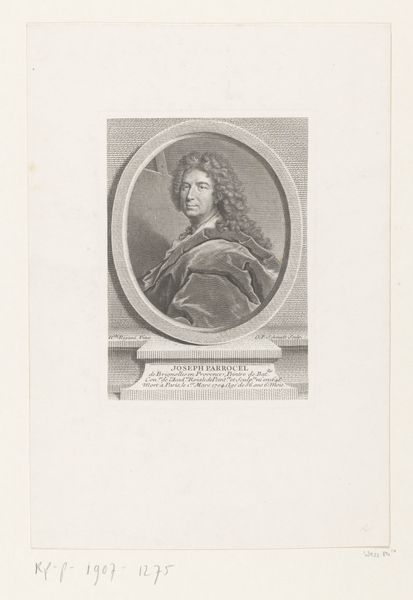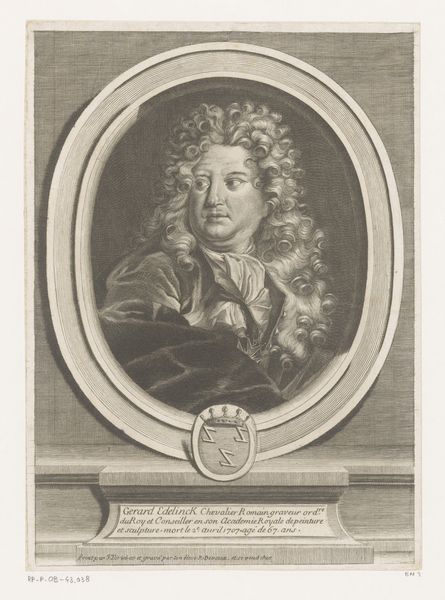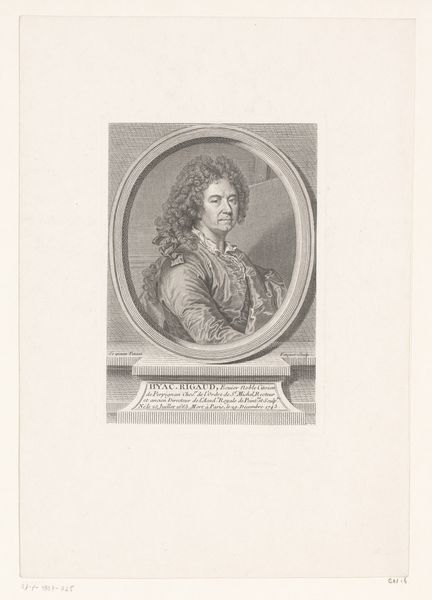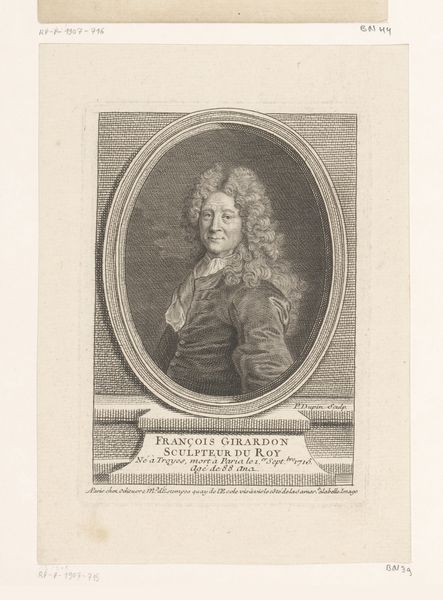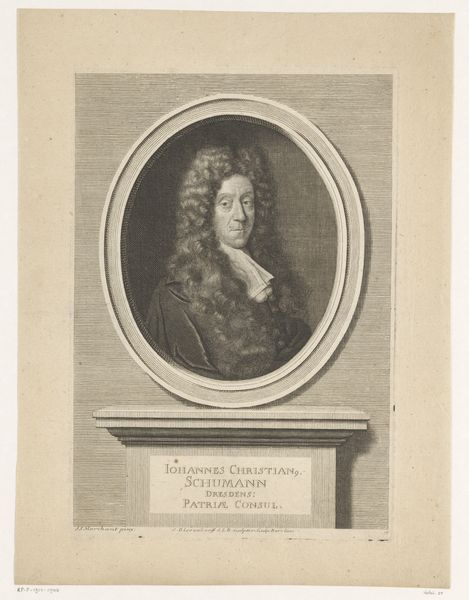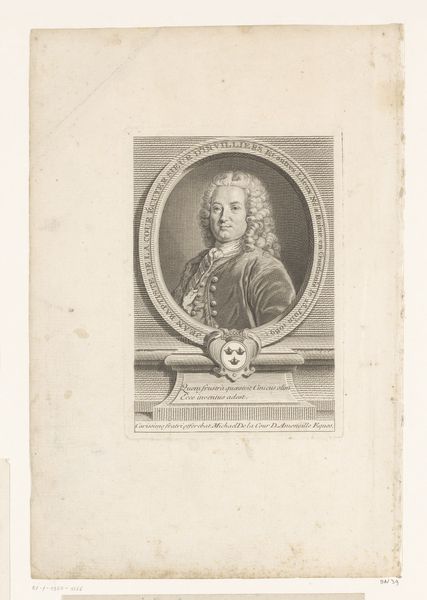
paper, engraving
#
portrait
#
baroque
#
old engraving style
#
white palette
#
paper
#
history-painting
#
engraving
Dimensions: height 149 mm, width 110 mm
Copyright: Rijks Museum: Open Domain
Curator: Standing before us is a captivating engraving from around 1755, titled "Portret van Antoine Coysevox." It's currently housed here at the Rijksmuseum, and was crafted by C. Mathey on paper. Editor: My immediate impression is of a man framed by history, both literally, in that circular frame, and figuratively. There's something about the fine lines that lends a sort of seriousness, like he’s a figure worthy of immense respect. Curator: It's quite fitting, actually. Antoine Coysevox was a prominent sculptor during the reign of Louis XIV. He even held the title of "Sculpteur du Roi" - sculptor to the king! The print, using elegant baroque styling, seems designed to enshrine his legacy. Editor: Look at those swirling curls of hair! So quintessential of the period, I’m kind of mesmerized by it. Almost like liquid rock—soft yet undeniably monumental. It speaks volumes of the era's opulence and its theatrical aesthetic, doesn’t it? How does this image, its circulation perhaps, contribute to the historical narrative around sculptors in 18th-century France? Curator: Mass reproduction, as afforded by engraving, democratized portraiture. What previously might be exclusively viewed by aristocratic circles could now find broader audiences. This artwork not only celebrates Coysevox but helps establish the sculptor as a cultural hero in the eyes of a wider public. These prints found a place in domestic interiors, reinforcing social hierarchies. Editor: So, these images actively constructed reputation… the art equivalent of a PR campaign. This specific example, I would assume, then participates in forming Coysevox's contemporary image. The choice of presenting him in a medallion – almost like ancient Roman busts – emphasizes his stature. The almost ethereal monochrome amplifies this sense of gravitas. It invites, compels reverence, perhaps even a bit of envy. Curator: It certainly positions Coysevox as part of an intellectual and artistic lineage, bridging the classical world with the Bourbon court. And this makes me reflect again on the way portraiture became essential not just for memorializing someone but also in constructing broader historical narratives. What stories will *our* portraits tell, I wonder? Editor: Yes, and even for questioning that received image. A good point. I love the nuance with which art history can connect these points. Thanks for walking us through that!
Comments
No comments
Be the first to comment and join the conversation on the ultimate creative platform.
